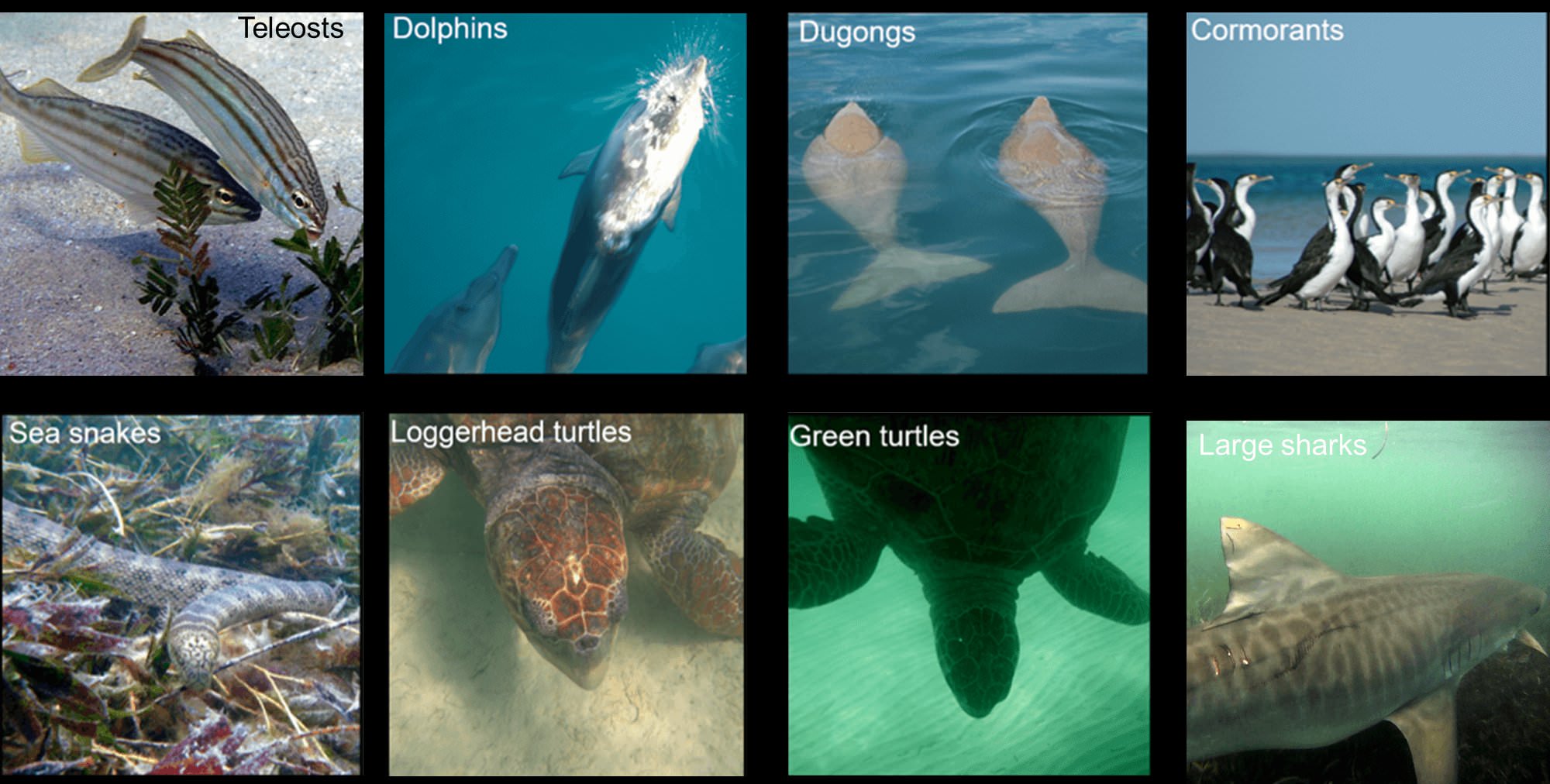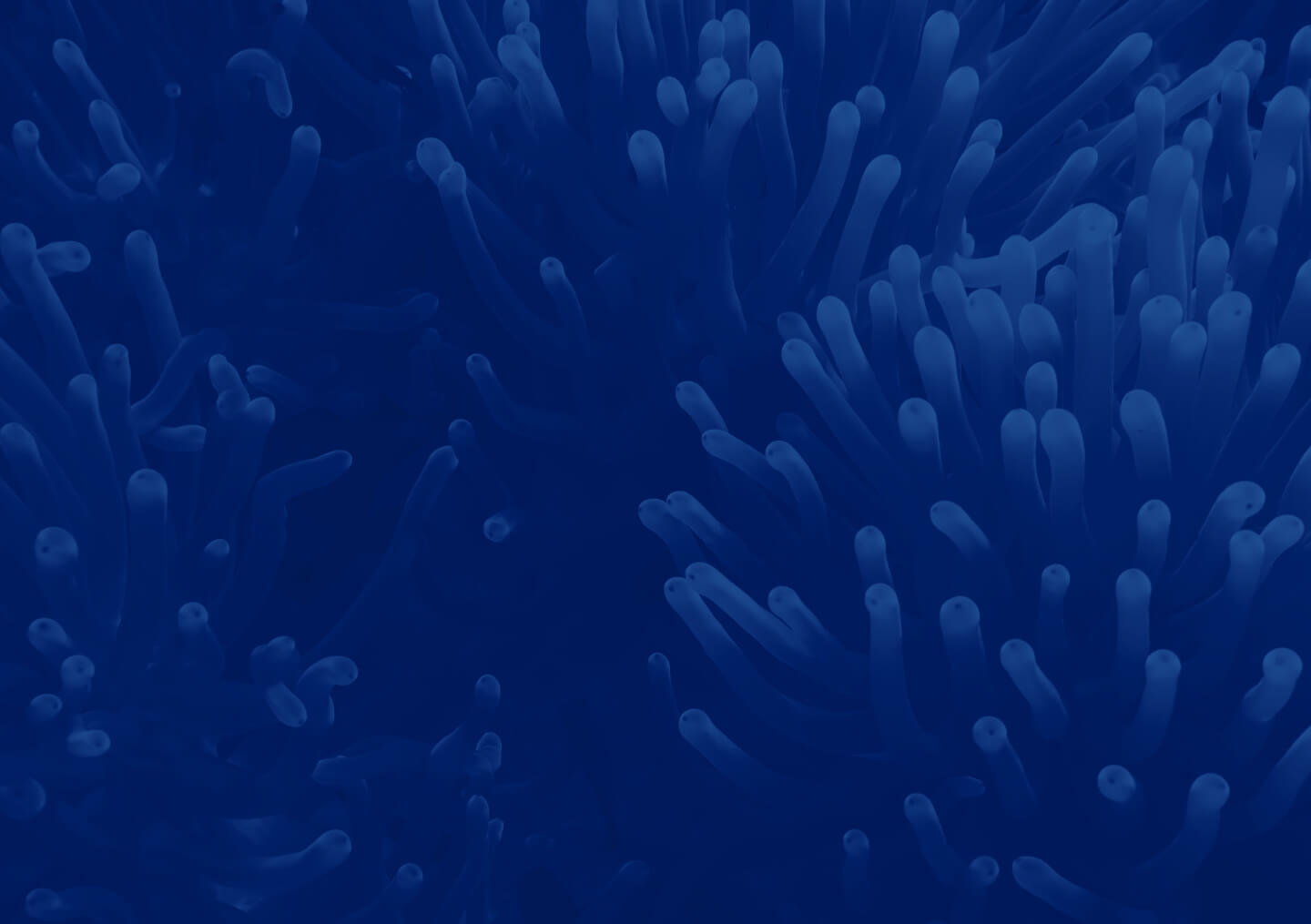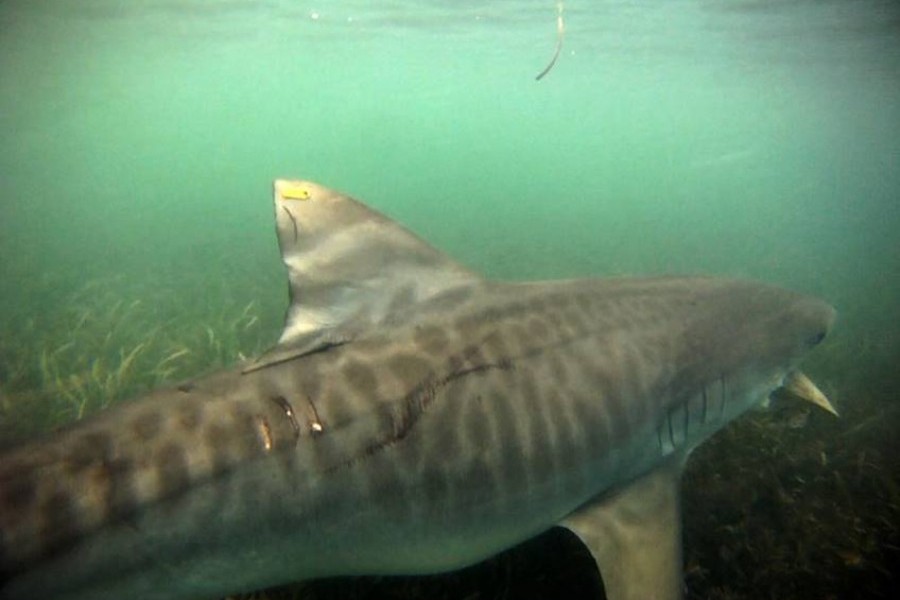Diverse marine animals from dugongs to sea snakes became rarer in the UNESCO World Heritage Site Shark Bay, Western Australia, after a heat wave devastated the dominant seagrass species, reports a newly published study demonstrating how certain vital ecosystems may change in a warming climate.
The peer-reviewed study, published today, April 25, in Ecological Monographs, was led by Dr. Rob Nowicki, a Mote Marine Laboratory Postdoctoral Research Fellow who conducted the fieldwork while earning his doctorate from Florida International University (FIU). Dr. Michael Heithaus, Dean of FIU’s College of Arts, Sciences & Education, and colleagues from multiple institutions have studied Shark Bay’s ecosystem for more than 20 years. The current study included partners from FIU, Deakin University in Australia, Nova Southeastern University in Florida, and the University of Washington.
Shark Bay earned its World Heritage status, in part, because of its 1,853 square miles (4,800 square kilometers) of seagrass beds, which UNESCO’s website calls the “richest in the world.” This vast, subtropical ecosystem hosts thousands of large sharks, other fishes, sea snakes, sea turtles, dolphins and a critical population of dugongs, seagrass-eating mammals related to manatees.
Earlier published research by Nowicki and partners documented seagrass recovery (or lack thereof) following 70- to 90-percent losses of seagrasses at study sites after summer 2011 brought the hottest water temperatures on record at the time. Heat waves are one type of “extreme climactic event” predicted to become more common due to global climate change. Shark Bay’s dominant seagrass species, Amphibolis antarctica, declined and failed to rebound significantly in the next few years, and in some spots it was replaced by smaller, tropical Halodule uninervis seagrass — somewhat like replacing a forested canopy with a mowed lawn.
“The Amphibolis seagrass is like a giant thicket that creates habitat and food, slows down water currents and clarifies the water,” Nowicki said. “When we lost those functions, the question was, can the animals tolerate that?”
Nowicki and partners had a unique opportunity to find out. Shark Bay study partners had amassed thousands of hours of relatively consistent, coordinated baseline data — sharks caught and released, transect survey observations of dugongs, sea turtles, sea snakes and more. Now they were in the right place, at the right time, with the right data to assess how several interrelated species were responding to a lasting “legacy effect” of an extreme climate event — seagrass loss — through a study of rare scope and detail.
The team analyzed shark data from some 27,052 hours of catch-and-release fishing across 414 days between 1998 and 2015, including 95 days after the seagrass die-offs. They also analyzed data from 3,375 transect surveys, including 714 after the seagrass die-off, which documented 22,371 animals of multiple species.
“Essentially we found that, for most species, when you lose the seagrass resources you lose a lot of the animals, but the nature of how they get lost — for instance, whether they starve or leave — and the degree to which you lose them differs by species,” Nowicki said. “Dugongs, which have to eat seagrasses, and sea snakes, which use it for foraging and refuge, were really hard hit.”
Photo: Animals documented by the Shark Bay Ecosystem Research Project, most of which were included in the new study. Credit: Shark Bay Ecosystem Research Project.

Some key findings:
- Fishing surveys showed that tiger sharks (Galeocerdo cuvier) and then sandbar sharks (Carcharhinus plumbeus) were the most common of the 16 shark species found during the study. While shark numbers generally did not decline after the seagrass die-off, the tiger sharks caught afterward were smaller on average and likelier to be male. Tiger sharks are “generalists” that can feed on a wide variety of animal species, and their flexible feeding was expected to support their survival amid environmental change.
- Another generalist feeder, the loggerhead sea turtle (Caretta caretta), tends to find prey in areas with reduced seagrass cover and may have benefited — at least temporarily — from seagrass loss. Their numbers remained stable and they were spotted more often in shallow areas with more accessible prey but greater risk from sharks, even if sharks continued to be documented nearby.
- Indo-Pacific bottlenose dolphin (Tursiops aduncus) sightings declined about 40 percent after the seagrass loss, for reasons that remain unclear. This species tends to live within a stable “home range” and may move temporarily during extreme climactic events, but the recent heatwave didn’t exceed the temperatures this species can encounter in other parts of its range and didn’t account for their prolonged decline. The dolphins feed in seagrass beds but are not solely dependent on them.
- Pied cormorants (Phalacrocorax ssp.) primarily eat fish in seagrass beds, and this may help explain why their abundance declined 35 percent after the seagrass die-off. Some of these relatively mobile birds might have left the area once food sources declined. Those still detected increased their use of the risky-but-profitable shallow habitats.
- Green sea turtle (Chelonia mydas) abundance declined 38.6 percent, and emaciated green sea turtles were documented repeatedly. Seagrasses are a substantial part of the species’ diet, and scientists suspect that some turtles may have died from starvation or from a weakened ability to avoid predators.
- Dugong (Dugong dugon) abundance declined 67.5 percent after the seagrass die-off. These cousins of manatees must eat seagrasses to survive and have previously been documented to leave depleted areas. Their departure was considered likelier than starvation based on past studies of dugong behavior and the absence of stranded or dead dugongs. These mammals prefer tropical seagrasses, some of which are native to Shark Bay and declined due to the heat wave, and they also eat shoots of A. antarctica, the area’s dominant and hardest-hit seagrass.
- Sea snakes (multiple species) were hardest hit, declining in abundance by 76.7 percent. They depend heavily on seagrass beds for protection and hunting but can have extremely small home ranges, suggesting they were less likely to relocate and more likely to perish — either from starvation or from increased predation.
The declines in abundance of dolphins, cormorants, green sea turtles, dugongs and sea snakes were all statistically significant, meaning that they were highly unlikely to occur by chance. While this type of study cannot prove definitively that the seagrass loss drove these major changes — and the experimental setups needed for that proof are challenging to implement in the ocean — the study strongly suggests seagrass loss was a problem for these animals, based on many past studies of the animals’ life history, relationships to seagrass beds and to one another.
In addition to declines, the authors noted which of these “consumer” animals appeared to take greater risks following the seagrass die-off, perhaps pursuing scarcer food more boldly in a way that exposed them to the risk of predatory sharks. The authors wrote: “Several consumer groups significantly modified their habitat use patterns in response to the (seagrass) die-off, but only bottlenose dolphins did so in a manner suggestive of a change in risk-taking behavior.”
Above all, the authors offer an important perspective on extreme climactic events (ECEs), expected more often amid climate change: “We show that ECEs can have strong indirect effects on megafauna populations and habitat use patterns in the marine environment, even when direct effects are minimal.” Direct effects include the temperature change and indirect included seagrass loss and altered relationships among wildlife. The results also suggest that “generalist marine consumers are less susceptible to indirect effects of ECEs than specialists.”
In general, Nowicki said: “If the seagrass beds are lost or changed permanently or semi-permanently, and then we have these animal populations crash, where do they go if they can go anywhere, and what does it mean for Shark Bay as a World Heritage Site?”
In more developed regions, seagrass habitats face not only climactic events, but local stressors such as pollution. Nowicki says that minimizing local stressors, such as nutrient pollution from fertilizer runoff into bays and estuaries, may give seagrasses — and in turn, the animals they support — better odds amid climate change and other global stressors.
Journal article DOI: 10.1002/ecm.1365
Journal article URL: https://esajournals.onlinelibrary.wiley.com/doi/full/10.1002/ecm.1365


